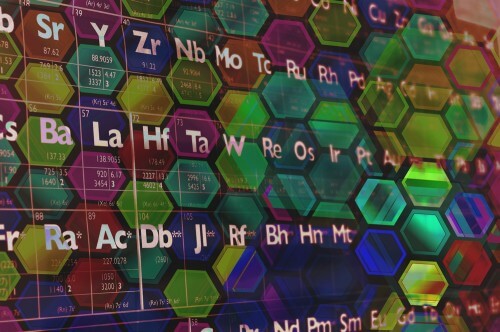The announcement by the United Nations will help raise awareness of how chemistry can provide solutions to global challenges in agriculture, education, energy and health.

The United Nations declared 2019 as the International Year of The periodic table of the chemical elements to mark its first publication in 1869. The periodic table as we know it today was first designed by the Russian scientist Dmitri Ivanovich Mendeleev.
The periodic table is not only a representative wall decoration in high school science classrooms, but also an extraordinary tool for scientists to understand and even predict the properties of all the elements. This is reinforced by the UN announcement which will help raise awareness of how chemistry can provide solutions to global challenges in agriculture, education, energy and health.
150th anniversary celebrations
This year marks the 150th anniversary of the first publication of Mendeleev's periodic table. Since its inception, the periodic table has been at the center of many discussions, and it is now considered "One of the most important and influential achievements In modern science, which reflects the essence not only of chemistry, but also of physics, biology and other disciplines.
Mendeleev's genius lay in recognizing that at the time not all elements were known, so he left holes in the table for unknown elements. At that time, only 63 elements had been identified. This made it possible to determine the properties of five more elements using the table (the gaps were brilliantly added to complete the table).

Image: The latest version of the periodic table (published December 2018). International Association of Pure and Applied Chemistry, FAL
other versions
Mendeleev's periodic table has been in the spotlight for decades, but there were other scientists before him who tried to organize all the known elements. as early as 1789, Antoine Lavoisier He classified a list of 33 elements and tried to reveal the secrets of the chemical elements and classify them according to their properties.
Scientists like Alexandre Emile Baguire de Chencourtois, John Newlands and Julius Luther Mayer They suggested different ways such as a coil, a table, a cylinder and even a spiral, with the aim of visualizing and organizing the elements but without success.
Saving holes in the table
Discoveries of several new elements in the following years confirmed Mendeleev's predictions, and revealed the genius of the 'Periodic Law', according to the name Mendeleev chose for the table.
55 elements have been discovered since Mendeleev's initial publication, and they have all been incorporated into the existing classification according to their atomic mass: how many protons and neutrons are in the nucleus of each element. Of course, these have the properties observed by the incomplete table which explains why Mendeleev's attempt to organize the elements was so successful and survived the test of time.

Image 2: Timeline of the discovery of the chemical elements. Andy Berning / Compound Interest, , CC BY-NC
Element 101 is named Mendelboium to honor Mendeleev's contribution. It's actually a rarer award than winning a Nobel Prize: only 50 scientists have elements named after them, while 180 chemists have received a Nobel Prize in Chemistry.
In 2016, they still had to discover four elements according to the gaps in the periodic table. with the addition of Nihonium, Muscovium, Tensin ו Ogenson, the periodic table completed.
The declaration of 2019 as the "International Year of the Periodic Table" may bring the public's attention to the importance of chemistry in our lives, stimulate our curiosity for science and encourage the scientists' interest in discovering more elements.
The periodic table song, starring 118 elements.
Mapping - for what?
Mapping, discovery and then... maintaining the existing until it breaks and again from the beginning. Periodicity is a natural element in the universe, in existence, from the basic elements to the greatest compensations that were and will be.
Mapping is the beginning of discovery, of a journey of exploration whose end is the solution of a riddle, the understanding of a mystery, the completion of a puzzle.
I want to ask you readers: what if we were to map in the same way other puzzles of the world we live in?
An example of this is "The periodic table of the professions of the future” that helps us predict future professions just as the periodic table of the elements helped us predict ancient elements.
More of the topic in Hayadan:

4 תגובות
All four elements that are mentioned as elements that had yet to be discovered were discovered before 2016...
Nathan
The atomic number of hydrogen is 1, of helium 2 and of lithium - 3.
The article is correct that the atomic number is the number of protons.
The sum of the protons and neutrons is "atomic weight"
Atomic number is *not* the number of protons but the number of protons and neutrons